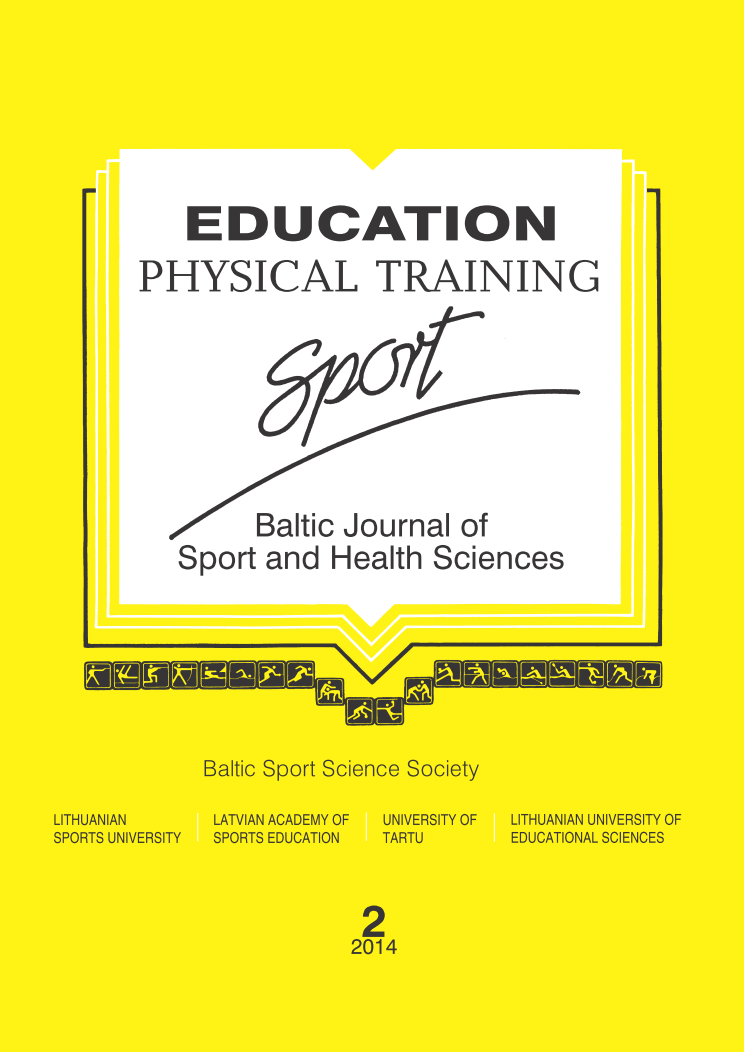Kinetics of Pulmonary Ventilation and Carbon Dioxide Output during Intermittent Increasing Cycling Exercise after a Prior Anaerobic Load
Abstract
Background. Research aim was to establish the influence of a prior anaerobic load on the kinetics of ventilation
(V E ) and carbon dioxide output (VCO 2 ) during on- and off-transition phases of intermittent increasing cycling
exercise.
Methods. The seven healthy, physically active females volunteered to estimate the influence of a prior anaerobic
load on the kinetics of respiratory parameters. During the first visit VO 2 max was evaluated using the increasing
cycling exercise test. During the second testing the participants performed intermittent cycling exercise (ICE).
During the other visit they performed supramaximal 30 s anaerobic exercise and after 15 min of the rest – ICE. In
order to estimate the kinetics of respiratory parameters were analysed by adopting mono-exponential function.
Results. Mean blood lactate concentration was increased during ICE performed after prior anaerobic load in
the presence of a residual metabolic acidosis. The asymptote and amplitude of monoexponential function reflecting
VCO 2 kinetics during on- and off-transitions were not changed after prior anaerobic load. The time constant of this
function was significantly longer (p < .01) both during on- and off-transitions at work rate below lactate threshold
(LT), whereas this parameter at higher work intensities remained unchanged. The parameters of V E monoexponential
function during on- and off-transitions were not changed after prior anaerobic load.
Conclusion. Despite similar physiological mechanism responsible for V E and CO 2 regulation during exercise
the prior anaerobic load had different influence on the ventilation and VCO 2 kinetics during exercise below lactate
threshold causing slowing of VCO 2 without changes of V E kinetics.
Keywords: exercise intensity, lactate threshold, pulmonary ventilation, CO2 output, acidosis.
Downloads
Published
Issue
Section
License
Copyright (c) 2018 Baltic Journal of Sport and Health Sciences

This work is licensed under a Creative Commons Attribution 4.0 International License.






